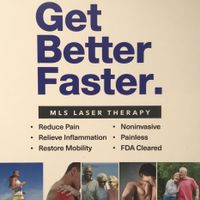What is Chiropractic?
Chiropractic is a form of health care that focuses on promoting wellness through working with the musculoskeletal and central nervous systems of your body. Doctors of chiropractic (DCs), more commonly known as chiropractors, typically make gentle adjustments to your spine and neck, which helps make sure all parts of the spine are lined up properly, a state known as alignment. Getting your body into alignment provides physical and emotional relief from stress, pain and supports overall healing.
Chiropractors provide hands-on care to treat a range of health conditions without using surgery or medication. Chiropractors are perhaps most well-known for working with back pain, however, chiropractic is a comprehensive system for treating injury, as well as supporting wellness. In addition to structurally adjusting the spine and other parts of the musculoskeletal system, chiropractors assess and diagnose their patients, offer nutritional counseling, guide overall physical rehabilitation and explore additional life factors that could be contributing to health problems.
In other words, doctors of chiropractic are holistic wellness practitioners who work with their patients to help them lead healthier and more balanced lives.
"The structure of the body is important to whole health," shares Chiropractor and Master Nutrition Response Testing practitioner Lisa Gordon. "While many people come in for pain, many other things get noticeably better after treatment. Sleep and mood may improve, making them less irritable, less depressed or anxious. Heart function may improve. Learning may improve. I've had kids go from D to A students! I see digestion and menstrual cramps improve all the time, even if my patients originally came in for back pain".
How does chiropractic work?
Chiropractors mostly work with the spine, which is a key part of both the musculoskeletal and central nervous systems. Adjusting the spine can help your body to function better, decrease pain and stress, and promote wellness. Chiropractors also use additional treatment approaches as indicated, including diet and supplements. Chiropractic is a natural healing modality, as chiropractors do not use drugs of any kind to treat their patients.
Melissa Windsor, DC, a chiropractor with a wellness practice in Reston, VA, says, "What I'd love for people to know about chiropractic is that it's just so simple! A comment I hear most often is, 'I wish I had known'. Recently a mom brought her daughter in with a painful muscle problem. They had gone to multiple appointments with an orthopedist and a physical therapist. The first time I adjusted her, her pain was gone. 'I wish I had known', the mom said."
History and philosophy
Chiropractic was first developed by Daniel David Palmer in the late 19th century. Similar to the early osteopaths of his day, Palmer found that gently manipulating the structure of the body - the way bones, muscles, tissue and joints fit together - could be a powerful healing practice. He realized that such practices had been used by healers around the world for centuries, but without significant formal study. In 1897, Palmer established the first school of chiropractic, now known as the Palmer College of Chiropractic, to help research, codify and teach his hands-on healing practices.
Today, chiropractic continues to focus on hands-on practices, the most common of which is spinal manipulation. The spine is a particularly key part of the body's structure that connects the brain to the body's organs through the central nervous system. By working with the spine to make sure the vertebrae are in proper alignment, chiropractors can help not just physical symptoms of pain, but the overall function of the central nervous system, which essentially controls everything the body does.
The chiropractic tradition teaches that the body has an innate healing ability and desire to be well. The goal of chiropractic treatment is to support the body's natural healing processes. Chiropractors always seek to work with the body, rather than suppress symptoms to provide temporary relief.
Science
Chiropractic is an evidence-based healthcare profession. Chiropractors continually observe and assess how their treatments are working to benefit their patients.
How do the central chiropractic practices of adjustments and spinal manipulation work in the body? Chiropractic can directly affect the structural alignment of the spine or other parts of the musculoskeletal system. One major cause of pain in the body is aspects of the musculoskeletal system not lining up properly - for example, a spinal disk being pushed outwards from the spinal column. This can put tremendous pressure both on the misaligned disk, and the rest of the body, which is attempting to compensate. Chiropractic adjustments can help fix that.
Another key reason chiropractic is an effective treatment lies in the relationship between the spine and the central nervous system. The central nervous system, made up of the brain and the nerve tissues the brain uses to communicate with the rest of the body, is largely housed in the spine. Supporting the spine thus directly impacts the central nervous system.
Two aspects of the central nervous system: the sympathetic and parasympathetic nervous systems, are a focus of chiropractic treatment. The sympathetic and parasympathetic nervous systems essentially control your body's stress response. When you are exposed to a stressful situation, the sympathetic nervous system activates production of stress hormones, including adrenaline and cortisol, that take your body into the fight, flight or freeze stress response. When the stressful situation is resolved, the parasympathetic nervous system calms your body back down, helping you to relax.
However, the sympathetic nervous system frequently gets stuck in the - on - position. This can occur if you experience a trauma, or a high level of small, daily stressors. Whatever the cause, if the sympathetic nervous system remains active for long periods of time, it puts a great deal of additional stress on your body as a whole. It becomes difficult to think clearly, you become at risk for anxiety and depression, and susceptible to a range of stress-related health problems.
By working with the spine, chiropractic can actually help activate the calming parasympathetic nervous system, turning - off - the sympathetic nervous system and your body's stress response. This can have a significant impact on stress-related health problems, as well as your overall feelings of wellbeing.
Lisa Gordon says, "Patients say, 'I feel so much looser... I can sleep more easily... My mind is clearer... The pain is gone... I don't have a headache anymore... My period was easier this time... My husband appreciates my coming to see you because I'm so much nicer now!' They feel better."
Method
As doctors, chiropractors have an entire family of treatment options at their disposal. However, most chiropractors base their practice around the main tool that sets them apart from other wellness practitioners - chiropractic adjustments. In order to perform chiropractic adjustments, chiropractors place their hands gently on the patient, and then use small amounts of pressure and force to reposition elements of the musculoskeletal system. Chiropractors first determine what parts of the body need to be adjusted based on the patient's symptoms and life history, as well as their own examination. Chiropractic adjustments are simple and typically not painful.
"Forget everything you think you've heard about chiropractic!" says Melissa Windsor. "It's a very gentle approach. We know that because we even adjust babies. It amazes me that people will put a drug they don't begin to understand in their body, but won't try a simple physical adjustment - importantly, one that so often works".
Holistic chiropractic
Chiropractic is a holistic healing profession. This means that chiropractors take a wide angle approach to working with their patients. A chiropractor isn't just interested in the physical structure of your spine and body, but in other factors, like nutrition, relationships and stress, could be affecting your wellness. However, while some chiropractors adhere closely to this broader perspective, others are more focused on specifically treating the musculoskeletal system. Depending on your needs, consider asking a potential chiropractor how they approach treatment.
What can chiropractic treat?
Chiropractic can provide frontline or complementary treatment for many health conditions, including disorders of the musculoskeletal system, stress, and wellness promotion. Specific issues chiropractic can help with include, but are not limited to:
Back pain
Chiropractic is a common and useful treatment for back pain. Studies have repeatedly found chiropractic is an effective method for relieving back pain. Chiropractic can both help properly position elements of the spine that may be leading to back pain, and reduce physical and emotional stressors that are contributing factors.
Neck pain
Likewise, chiropractic is also an effective treatment for neck pain. One study, published in the Journal of Manipulative and Physiological Therapeutics found that two-thirds of patients who received chiropractic treatment for neck pain recovered. Another study found that chiropractic patients reported greater reduction in pain than patients who were treated with pain medication.
Need for back surgery
Surgery is a common treatment for chronic back pain. However, it is expensive, invasive, requires a long recovery period - and often doesn't work. Working with a chiropractor can often significantly reduce your pain levels or even heal structural spinal damage without exposing you to the dangers and side effects of back surgery.
Stress
Stress of any kind - physical, emotional, or mental - can have a significant impact on your health and well-being. Chiropractic is a proven method of stress reduction. A study published in Alternative Therapies of Health and Medicine found that chiropractic patients also described feeling a greater sense of well-being and less pain after receiving chiropractic care. The study also found that chiropractic reduced levels of the stress hormone cortisol in patients, as well as positive changes in the stress and pain centers of their brains.
Hypertension
Individuals receiving chiropractic care have been found to experience a decrease of hypertension (high blood pressure). This is likely related to the fact that high blood pressure is often the result of stress. Because chiropractic can help patients to relax and lower their stress levels, their bodies are able to bring their blood pressure back to healthier levels.
Pre and post-natal care
Carrying a baby puts significant strain on a woman's body. Chiropractic can help an expectant mother to have a more relaxed and comfortable pregnancy by helping keep her spine in alignment despite the increased weight and pressure from the baby. Chiropractic adjustments can reduce pain and muscle tension, which can also result in a smoother, easier birthing process. For women who have already given birth, chiropractic has been found to help ease recovery from pregnancy, as well as help prevent or reduce the experience of postpartum depression.
This can also benefit the baby. Babies can often work themselves into cramped positions in the uterus. Getting the mother's body into alignment can create more space for the baby, as well as increase blood flow to the uterus, which helps the baby's overall health.
Wellness and maintenance
Regular chiropractic treatment can be a good tool for promoting wellness and maintaining health. Both acute injury and chronic pain are often caused in part by long-term structural imbalances in the body that were never addressed before they flared up in one way or another. By working with a chiropractor preventatively, you can keep your body aligned and prevent laying the groundwork for health problems down the road.
Anxiety
Because chiropractic affects the body's stress response, it can be a useful tool for treating and reducing anxiety. Chiropractic patients typically feel more relaxed and peaceful after a session. Several studies have also shown that chiropractic can help people struggling with anxiety to experience a greater sense of calm.
Depression
Some patients suffering from depression have experienced improvements after chiropractic treatment. This may be in part because of the relationship between pain and depression. People suffering from chronic back or neck pain often experience depression as a result. Because chiropractic care can reduce or even heal pain, there is often a corresponding lift in symptoms of depression.
Infant and pediatric chiropractic
Chiropractic doesn't discriminate. It's good for all ages, starting in the womb. Mom getting adjusted may improve blood supply to the baby. Adjusting a nursing baby may instantly improve latching as well as improve sleep. Difficulty in starting to crawl may resolve after an adjustment. By the time they are two years old, babies have fallen an estimated 1500 times. Correcting structural misalignments for toddlers and growing children may stop an issue from developing into a chronic health problem.
"I think chiropractic strengthens family relationships because people are well!" shared Melissa Windsor. "I treat a lot of families, and they come back because chiropractic makes them feel good. They are more active, they can do more things. Health and happiness go together".
Safety and side effects
Chiropractic is considered a safe treatment modality. Chiropractic adjustments rarely result in any side effects. Rarely, patients may feel a little sore or experience mild headaches. These usually go away within a day.
The following experts reviewed and contributed to this article:
Lisa Gordon, DC and Melissa Windsor, DC
References:
Palmer College of Chiropractic
Selected Studies:
Cerebral metabolic changes in men after chiropractic spinal manipulation for neck pain
Ogura T, et al
Alternative Therapies In Health And Medicine, 2011
Cost-effectiveness of medical and chiropractic care for acute and chronic low back pain.
Haas M, Sharma R, Stano M.
Journal of Manipulative and Physiological Therapeutics, 2005





















